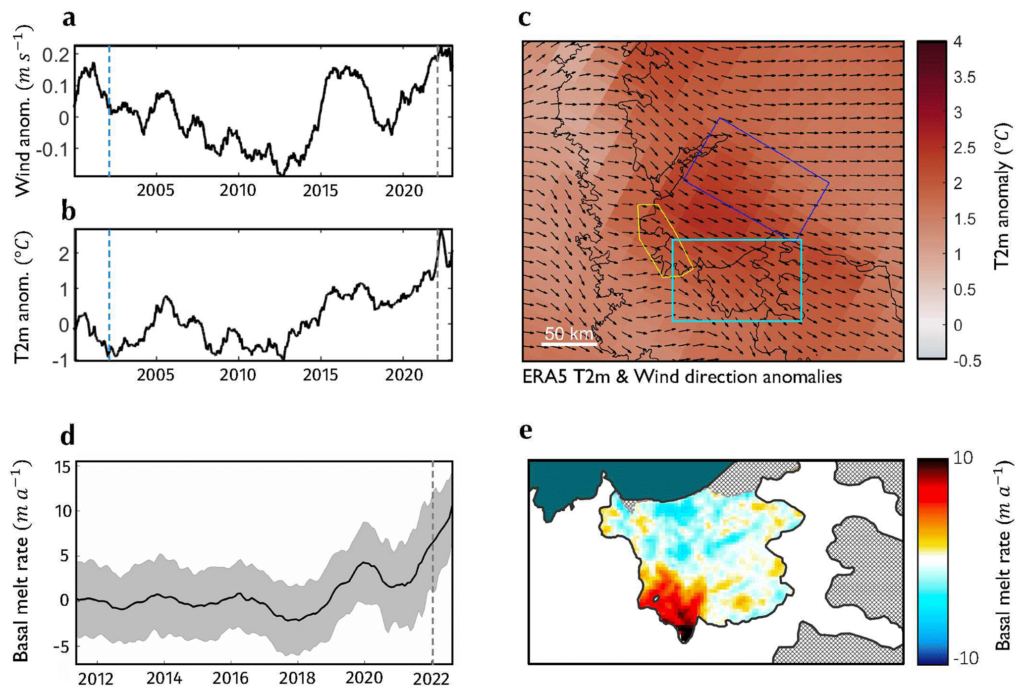
Ice Shelf Basal Melt Rates
Ice Shelf Basal Melt Rates
Loss of buttressing via ice shelves thinning is the principal mechanism by which the Antarctic Ice Sheet is currently losing mass and contributing to Sea Level Rise. It is therefore important to generate a detailed picture of ice shelf thinning to better evaluate its impact on grounded ice stability. Increase in the rate of basal melting is the primary cause of the observed Antarctic ice shelves thinning. This increase in melting is the result of additional heat transport from CDW making its way in the ice shelves cavities. This heat transport is the result of complex processes involving atmospheric and ocean physics, cavity shape, and subglacial discharge.
As part of the ESA Polar+ IceShelves and SO-ICE project, we have generated basal melt evolution at an unprecedented spatial and temporal resolution, and at the scale of the Antarctic Ice Sheet. A number of limitations were identified during Polar+ IceShelves that we propose to address in 5DAIS. The outcome of which will make the determination of time-dependent basal melt more robust to changes in ice velocity, ice thickness, damage, and extent, as well as improving the accuracy of basal melt rate determination at the proximity of the grounding line.

CryoSat-2 derived mean basal melt rate for the SCAR inlet ice shelf between 2010 and 2022. Adapted from Surawy-Stepney et al. (2024).
Summary of basal melt datasets planned within 5DAIS:
- Updated spatially resolved map of basal melt rates, over key ice shelves.
- Updated time-varying basal melt rates, including algorithm improvements over key ice shelves.
- Full uncertainty quantification. Comparison will be performed with existing products, either EO-based or based on in-situ measurements.
